Pointy Snout Caviar
Founders Michael Kline and Alexandra Du Cane speak about their sustainable approach to the luxurious treat
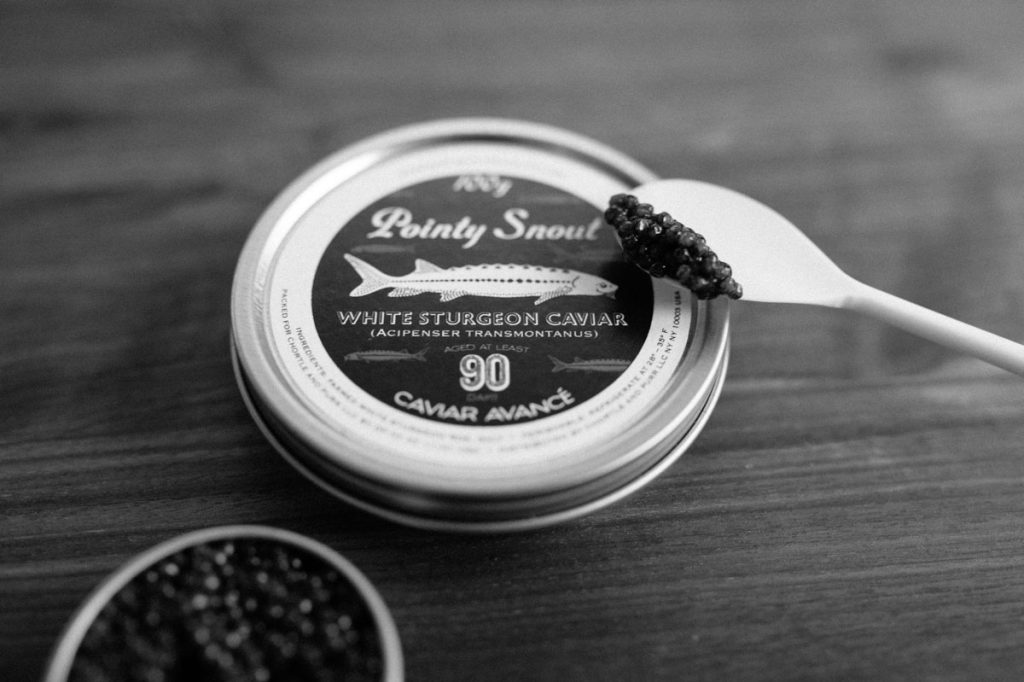
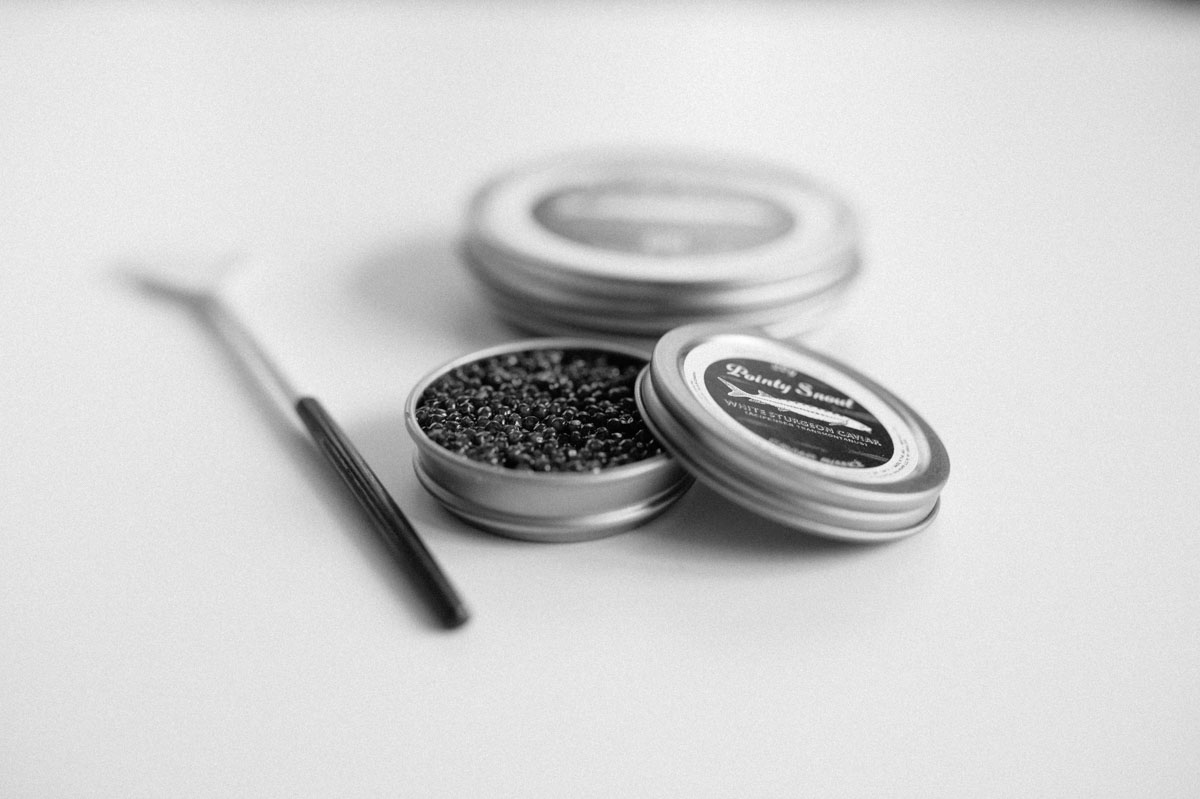
Record-high pollution levels and depleted sturgeon populations spurred an outright ban on fishing in the Caspian Sea in the early 2000s, which left the caviar industry flat-footed and desperately in need of a new source. As a means to an alternative, chefs and connoisseurs turned to the developing aquaculture industry in the hopes of finding a solution. Their prayers were answered by pioneers like the Stolt Sea Farm Group and independently minded purveyors like Michael Kline and his wife Alexandra Du Cane of Pointy Snout Caviar.
Not biologists, nor fisherman or restaurateurs, but a former investment banker and PR maven, the couple decided to launch their caviar brand after a eureka moment while eating caviar on vacation. “We were wondering what to do with the rest of our lives. We decided to think about the whole notion of luxury, and what it means to today’s consumer,” explains Du Cane. “We thought, ‘Let’s take this product and do something completely unexpected with it.’ We imagined a way of presenting caviar to a new demographic in a way that is not stuffy and does not pay reverence to old Russian kingdoms and czars.”
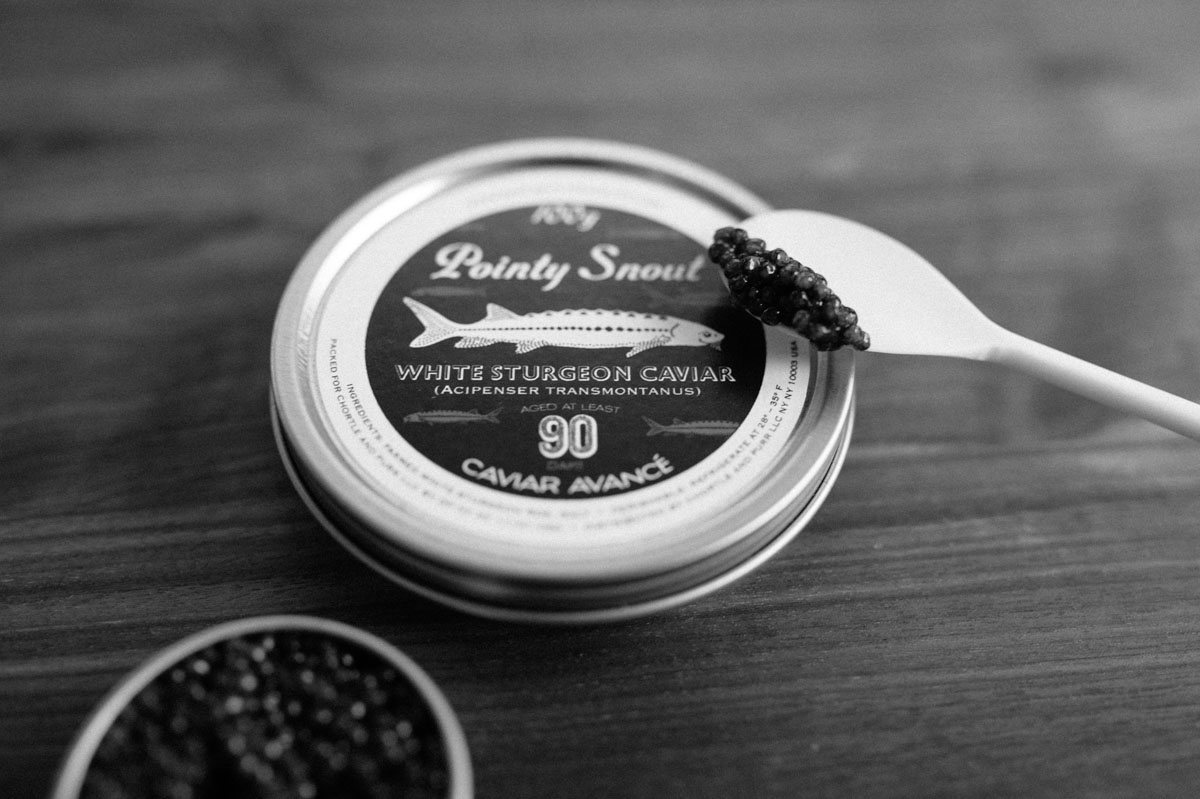
The globetrotting couple spent the next year researching and finding the most environmentally conscious methods and producers. For their eye-catching packaging, Du Cane collaborated with French marketing agency Spill and creative director Marty Cooke of Cooke&Co—and together, they came up with a design that married luxury and play. In 2011, they debuted their first caviar, Avancé. Almost overnight, their classic white sturgeon delicacy found an eager audience both among amateurs and professionals.
As industry leaders in sustainability, Pointy Snout is inspiring a new generation of caviar lovers, evidenced by collaborations with artists like Anne Koch and the frequent appearance of their tins on Instagram accounts. In the spirit of approachability, Du Cane and Kline gave us a crash-course in caviar and what sustainability means within the industry.
Are you the first sustainable caviar producer?
Kline: Today, it’s impossible to find anyone in the caviar business that doesn’t lay claim to selling a sustainably produced product. But, what we can certainly claim is that sustainability has always been at the forefront of our business and continues to be at the forefront [of] raising awareness about the importance of sustainability and about the plight of a species, namely the Sturgeon and its 26 or so varieties throughout the world that have become significantly under pressure because of non-sustainable methods of caviar that were prevalent until very recently.
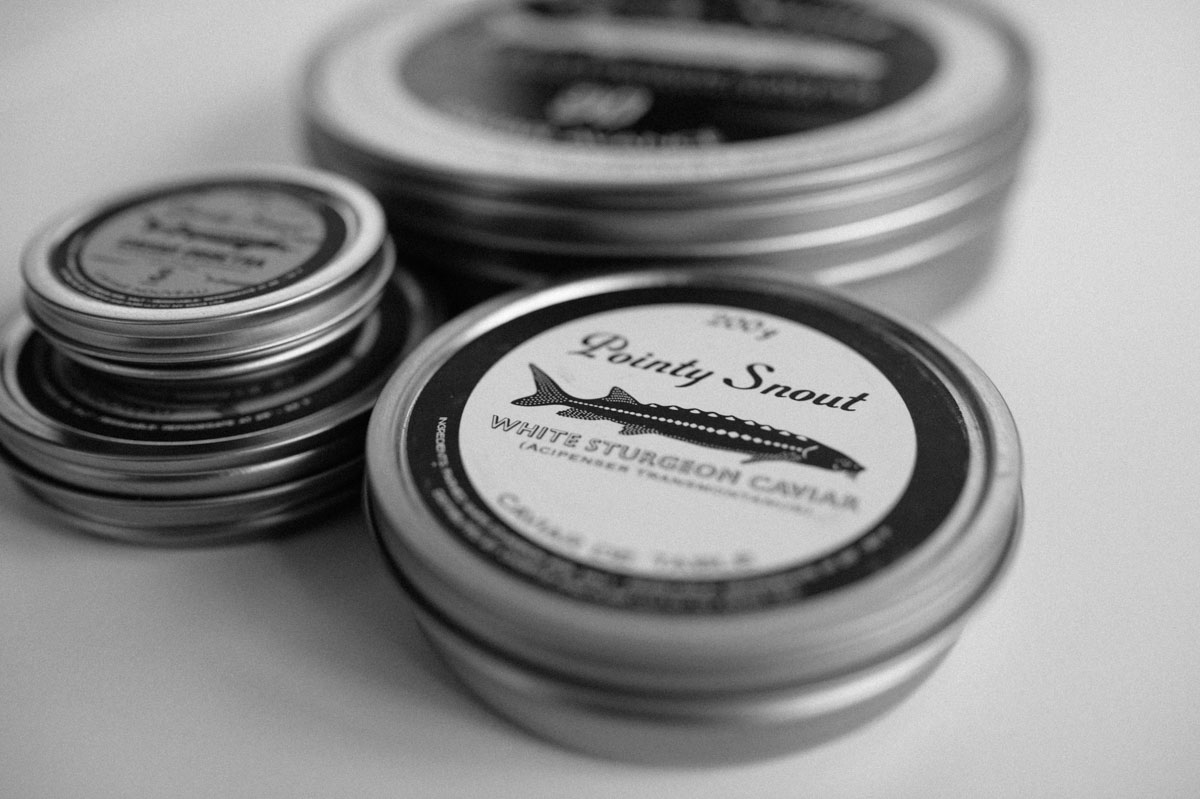
What does it mean to be a sustainable caviar producer?
Kline: The term sustainability in the case of aqua-farming has a very distinct point of measurement; it is generally accepted that that point of measurement is put forth by the Monterey Bay Aquarium. And its definition of a sustainable operation is one that has zero net impact on the wild species. And the way to flush that out is: How many pounds of wild fish do you need to use over the life of a fish that you are raising in order to create one pound for consumption? The definition of sustainability therefore is a one-to-one ratio. In the case of Sturgeon initially the ratio was somewhere between two-and-a-half to three pounds. Over time, because of the very scientific approach marine biologists took in developing practices and feeds, it has managed to get down to one to one or just north of there.
What is the impact of sturgeon farming on the environment?
Kline: Our farm Sterling, in California, uses what is known as a closed system, which means that it recycles and recirculates all its resources. It purifies its well water and circulates it after it been cleaned. A precious resource in California—the loss of water is held to a minimum. It’s highly efficient. Finally there is a very positive impact directly on the environment. The site where the farm is was initially characterized as an arid wasteland. By irrigating its immediate surrounding acres with the well water, the farm has converted the area into a lush pasture-land for raising dairy cows.
What’s the best way to eat caviar?
Kline: When you are eating really terrific caviar, a wonderful way to experience it is to eat it straight out of tin. This method reinforces the possible informality of something that is always a special event but nevertheless, we needn’t don gloves to enjoy it.
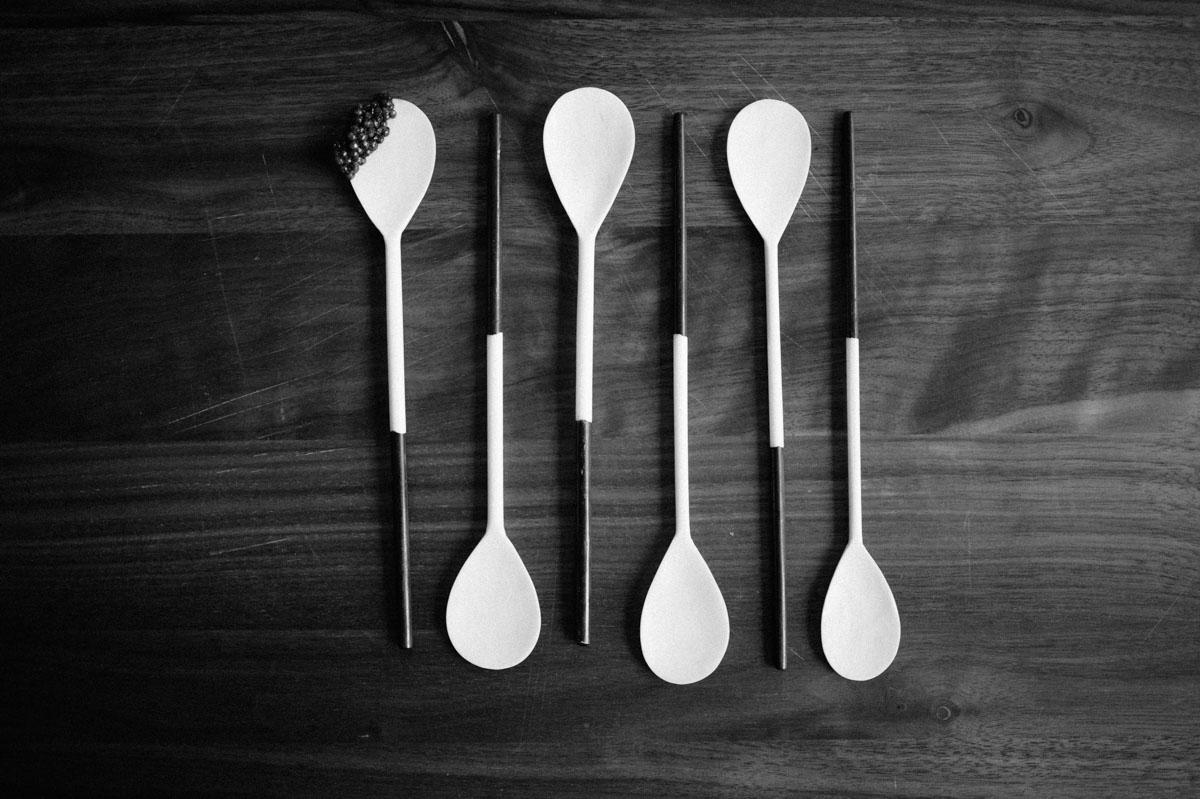
Du Cane: If you use a spoon that has a sort of flat paddle shape, and you place the spoon in your mouth and close it, the tongue will raise the caviar beads to the roof of your mouth and that is the optimal way of actually experiencing the full flavor and impact of the caviar. So, you get the beginning, the middle, and the finish just like with a wine. If you have a wonderful wine, you wouldn’t actually consider putting some water in it or squeezing some lemon in it. And really the same thing is true with really good caviar, because all of those other garnishes ultimately impact and detract from the flavor. We designed these special spoons, which we have made by a tribe in Kenya. They are made of camel bone and they have the perfect paddle shape. They are ideal. Having said that, the second best thing truly is a plastic gelato spoon. Plastic is one of the best things to use with caviar. Stay away from silver and metal, those are terrible, but any wood, bone or plastic works well.
What is the best way to serve caviar for a celebration?
Du Cane: Premium white sturgeon is absolutely the best bang for the buck. It is every bit as good as an average Ossetra, and in many cases people prefer it. If you are having a celebration, I think that there are a lot of fun things you can do with caviar beyond the traditional. And, of course the most traditional thing is to have a very freshly made crème fraîche, not bought from a packet in the store but actually made fresh, on a little toasted round of brioche. There are more complicated things to do with caviar of course, but the things caviar goes well with are avocados, coarse potatoes, and surprisingly white chocolate.
What drinks pair best with caviar?
Du Cane: You can pair caviar with any number of wines. You can have it with any number of cocktails. I know that traditionally vodka is the drink of choice, but frankly people drank vodka in Russia in the old days with caviar because caviar without refrigeration had to be so heavily salted as a preservative that they drank vodka to cut the salt of the caviar. But in actual fact, vodka deadens the taste buds—so if you are drinking vodka with caviar you are really missing the whole flavor of the caviar.
Kline: We are not recommending that anyone shouldn’t pair it with vodka, but it’s something to keep in mind.
What are your plans for the future?
Kline: We want to take away the mystery and the fear factor. We want caviar to always be special but never to be intimidating. On the contrary, we want it to be part of the discovery of that people like you, and people like us are now engaged in—about our food, where it comes from, what it means to us, how we can use it to make our lives happier.
All varieties of Pointy Snout caviars are offered through their website, but if you fancy caviar for the holidays, make sure to get your order in by 22 December for Christmas delivery and 29 December for New Year’s Eve.
Images by Josh Rubin












